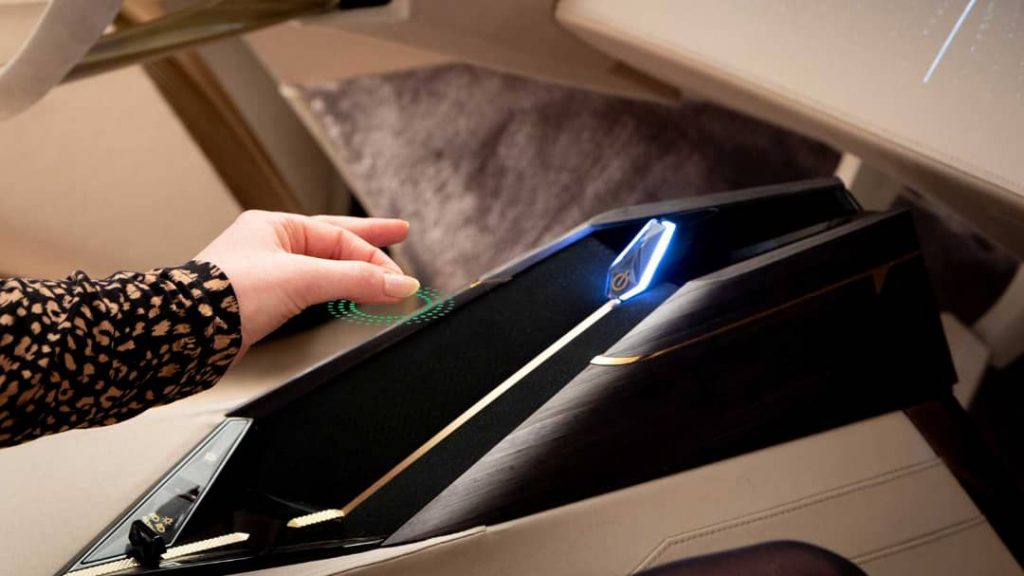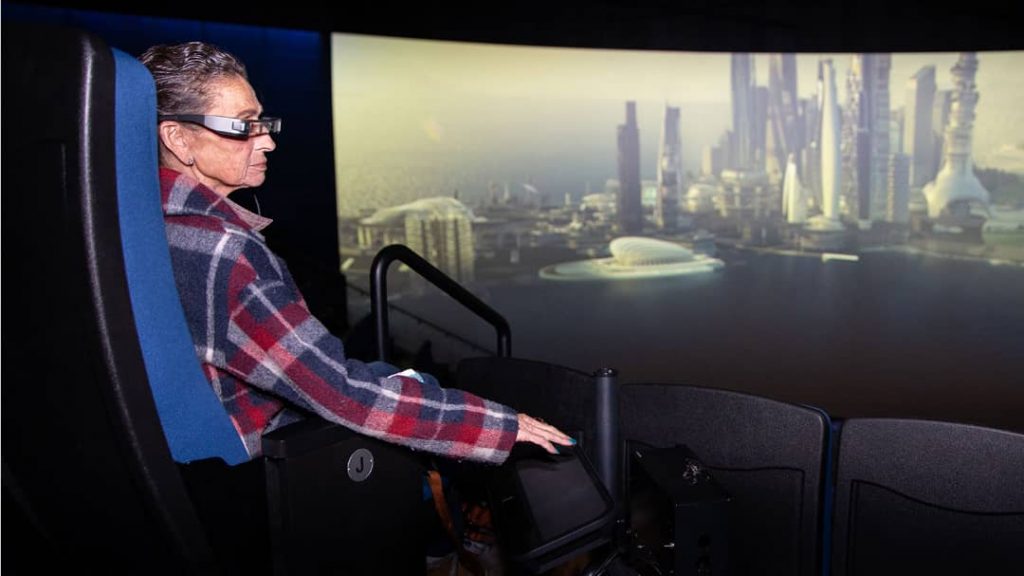What Is Haptic Feedback: Everything You Need To Know
In this walkthrough we will be explaining what Haptic Feedback is and everything else you need to know. Click to read more.
Author:Daniel BarrettMay 31, 202212849 Shares611868 Views

Perhaps you’ve heard of Haptic Feedback or even read about it. It’s a word that has been used with PS5 and XboxSeries X. Phrases like 4K, ray tracing, and 60FPS are also used. In this walkthrough, we will explain what Haptic Feedback is and everything else you need to know.
As mentioned earlier, as one of the usual phrases, ray tracing is all about increasing the visual fidelity and overall look of our games, heightening the realism of textures, shadows, and reflections. On the other hand, haptic feedback is about adding realism to the way games feel. Not emotionally, but rather getting physical feedback from your controller – or other peripherals – in a way that’s more nuanced, and realistic, than your traditional vibration or rumble pack.
Haptic Feedback Explained
As a gamer, you would most probably feel vibrations through your device when playing. This is called vibration feedback. The limitation of this effect is that it has the same effect for every action. For example, a tank explosion and a glass shattering would have the same effect, whereas that is not even realistic. There is no variation in the intensity of the feedback based on the causative action.
That’s where haptic feedback comes in. Haptic feedback is about the increased simulation of what it would feel like to touch or interact with something in reality. It allows precision vibrations that help better represent what’s happening in-game. Rather than the blasting vibrations of current controllers, haptic feedback allows there to be more subtlety. Ranging from the delicate splashing of raindrops to something more severe like an explosion.
While we may not instantly see the results of some of the visual enhancements in PS5 and Xbox Series X. Like 8K for example, the benefits of haptic technology will be immediate. Haptic is aimed at increasing your immersion, allowing you to feel more physically connected to what you’re doing as you play.
Why does haptic feedback matter?
Human beings possess five senses, but electronic devices communicate with us using predominantly just two: sight and hearing.
Haptic feedback (often shortened to just haptics) changes this by simulating the sense of touch. Not only can you touch a computer or other device, but the computer can touch you back.
Haptic feedback is a mode of communication rather than a specific technology or application. It’s nothing less than a completely innovative way for machines and humans to interact.
Also read: How To Link Amazon Prime To Twitch
What Does Haptic Feedback Feel Like?
In theory, haptic feedback can feel like anything. However, in practice, the feelings available are partial, especially in consumer devices. Different sorts of vibrations you usually feel with your hands, are the most common form of haptic feedback today.
The sensations most people relate to when they say “touch” are part of what is recognized as the somatosensory system. This encompasses various sensations. Not just sensations such as vibration or pressure, but also things such as pain, and temperature. Even the position and movement of your body in space.
The somatosensory system includes at least 12 specialized types of receptors. Each sends different information to your brain. One type sends information about vibration, one about pressure, one about pain, and so on.
These receptors are spread all over the surface of your body, and inside it, too. The average adult has 3 million pain receptors alone.
In theory, haptic feedback incorporates any of these sensations. However, simulating the somatosensory system in its wholeness is a huge task. According to Microsoft, “many orders of magnitude larger in complexity” than sight or sound). There are also some sensations – such as pain – you undoubtedly don’t want users to experience.
In practice, haptic feedback always targets a specific subset of your somatosensory system. A large number of haptic devices from game controllers to mobile phones to our own “virtual touch” haptics. They communicate solely via the receptors on your hands, for example.
But even very limited use of haptic feedback can be very effective. It is a result of the widespread use of relatively simple vibrations in mobile phone shows.
How Does Haptic Feedback Work?
Haptics is a collection of technologies rather than any single technology. Although every haptic technology communicates via your sense of touch, they achieve this in different ways.
Some of the most common haptic technologies are:
Vibrotactile haptics:
The tiny motors generate vibrations and other tangible effects in mobile phones, games and VR controllers. As seen in the Playstation5 and Nintendo Switch).
Ultrasonic mid-air haptics:
Algorithms regulate ultrasound waves so that the combined pressure of the waves interacting produces a force that can be effective on the user’s hands. The “virtual touch” haptic technology means that the user does not even need to be in contact with a physical surface.
Microfluidics:
Air or liquid is squeezed into tiny chambers within a smart textile or another device. This generates pockets of pressure or temperature on a user’s skin.
Force control:
Levers or other large-scale (and costly!) mechanical devices are used to exert force on the hands, limbs, or full body of a user.
Surface haptics:
Modulates friction between a user’s finger and a touchscreen to create tangible effects.
Even a brief overview of haptic technology would require an entire blog post on its own. But, more importantly, why do product designers add haptic feedback at all?
The Usefulness of haptic feedback
Visual feedback is used for many various purposes. From a flashing warning light to a desktop interface to the immersive experience of a VR headset. It’s the same with haptic feedback: there’s a rich spectrum of ways in which it can be used.
You can find Haptic feedback in everything from mobile phones to high-end aircraft simulation systems. From automotive infotainment to accessibility, from VR gamingto design workflows, from marketing to museums.
In 2018, “haptics” officially entered the Merriam-Webster dictionary. The haptics industry is estimated to be worth over $19 billion by 2025.
In our bodies, the somatosensory system is involved in everything. From establishing a sense of presence to emotional connection and well-being to enabling us to explore and interact with objects. To provide 360° sensory feedback. At Ultraleap, we see our technology used to achieve very different purposes in different applications.
Feasible Uses
In automotive, haptic feedback allows manufacturers to create non-visual modes of interaction. This reduces the number of times drivers take their eyes off the road.
However, in marketing, it’s the emotional component of touch that is important. Adding haptic feedback is proven to have a significant impact on customer engagement.
Generally, here is the usefulness of Haptic Feedback:
- It reduces time in completion of tasks
- Accuracy is increased.
- Haptics is regarded as next to natural interaction.
- In VR, it increases the sense of the presence of the things you see. A dragon’s breath, falling from a distant height, a dinosaur’s roar, and even flight.
In addition, education and training are also intensified for the learners. Even in medicine and industries too.
Haptic feedback is a tool that both enhances audio-visual communication and opens up the possibility of creating new products. It’s a tool we are just starting to understand the capabilities. With a language, we are still writing the dictionary.
Haptics and the Next-generation of Gaming
Don’t miss: What Is AppFlash On Android, And Do You Need It?
Regardless of the technology constituent, we look at for next-gen, it’s clear the focus is on heightening our gameplay engagement. Like making sure you spend as little time as possible looking at loading screens; streamlining the way we download games and updates; adding more realism to textures, shadows, and lighting; to introducing or improving technologies like haptic feedback.
The role of Haptics in the future would be more pronounced and intensified. Even though visuals are necessary, we have begun to put measures in place for sensation too. There would be a greater physical connection to our screens. It’s very promising.
Editor’s picks:

Daniel Barrett
Author
Latest Articles
Popular Articles




